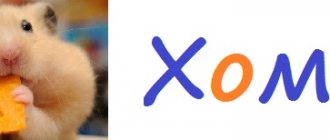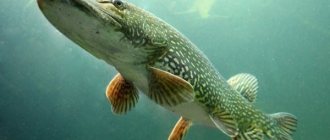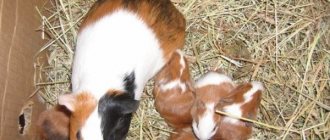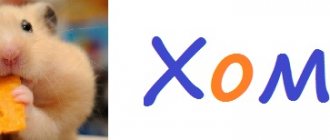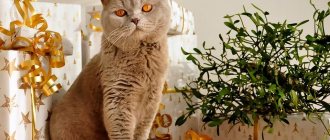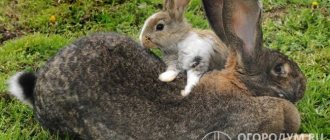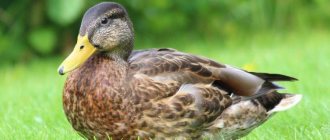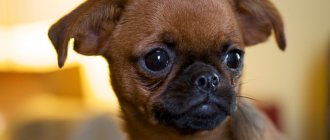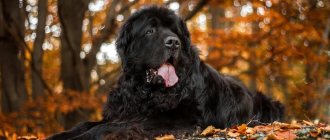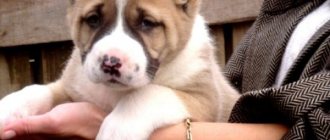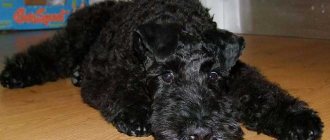Review author: “ZooVita”
Sooner or later, every person faces the choice of a pet. And after cats and dogs, some of the first animals that come to mind are all kinds of rodents.
A special place among them is occupied by the domestic guinea pig. These cute and friendly animals get along well with people, are devoid of aggression, are very clean and are considered long-lived among their own kind.
Guinea pigs with long hair
Peruvian
Peruvians are the pioneers of these cute, long-haired animals. Selection for their breeding began already in the 1800s in Europe. The long, thin fur of pets falls on the sides and on the head. Therefore, if the pig is not a show pig, the “bangs” can be trimmed, otherwise they can be tied up or pinned. Breed standards require only a straight coat, without curls, and two rosettes - on the rump and head, near the nose. Their character is much calmer than that of other representatives; they can sit on their hands for a long time.
Sheltie and Coronet
Shelties can rightfully be considered the most pleasant to the touch. Compared to the Peruvian, the silky representatives do not have a parting on the back, the fur falls back. True shelties should not have any rosettes, and the covering on the head is much thicker, creating a kind of mane. Like many long-haired guinea pigs, they also have a calm temperament. But Coronets are rightfully the most active among the longhaired ones. They are distinguished by a single rosette on the head, the glossy long fur from which falls beautifully on the sides without covering the face. Pets that do not participate in exhibitions are usually cut into a bob so that the coat does not become dirty. It took much longer to produce modern Coronets than the breeds described above. To understand for yourself which guinea pig is the best of the breeds with such a hairstyle, you should pay attention to the character. The most peaceful and slow are Peruvians and Shelties, the most active and playful are Coronet. But the latter can also sometimes be in a phlegmatic mood.
On the left - Peruvian, in the middle - Sheltie, on the right - Coronet
Lifespan
On average, pig-like rodents live about 5 years. With good care, the pet enjoys a life of 6 to 8 years. Sometimes especially lucky pigs live up to 10 years.
The short life expectancy is compensated by incredible fertility. 15 hours after giving birth, the female is ready to mate again as she goes into estrus. The offspring usually consists of 9 or 10 individuals. Thus, one individual can bring up to 100 babies per year.
Frequent births are not good for the animal, so it is better not to allow the female to give birth more than 2 times a year.
The fluffiest of fluffies
Rex
Rex is considered one of the newly developed breeds. They should not have rosettes; the hair on the head is usually coarser than on the back and sides. Due to the nature of the Rex guinea pig's coat, they sometimes need to be brushed with a special brush. Interestingly, this is one of the most intelligent breeds that can be trained. They need the company of their relatives more than others.
American Teddy
This breed is also one of the fluffiest and largest. They can be identified by their drooping ears and predominantly coarse coat.
The thickest wool is Alpaca
The Alpaca breed has a very thick, long, curly coat. They were bred back in the 19th century in South America. The main external differences are that there are several rosettes on the muzzle and the back of the body, and the growth of the cover on the legs from bottom to top. Alpacas are very friendly even towards strangers and have a calm character.
Left - Rex, middle - Teddy, right - Alpaca
Sheltie
At first glance, Shelties are very similar to Peruvians. But the fur is combed back. This is a distinctive feature of these animals. At first glance, it is noticeable that these are purebred guinea pigs.
When purchasing this beautiful pet, you need to be prepared for the fact that children will not be able to care for it on their own due to its long fur coat. But shelties are very attractive for games, especially for girls who give them original hairstyles.
The largest guinea pig is Kui
Not just the largest guinea pig, but a real giant - on average, they are twice as large as usual, weighing about 3.5 kilograms. In their homeland, Peru, Kuevs are bred mainly for meat, like our large breeds of rabbits. But more and more often they can be found as pets. Kui differ from their relatives in their more aggressive disposition towards each other and towards humans. Therefore, they are kept one at a time. If a person takes a very small cub, he can still make it tame. But the habit of biting remains with all giant piggies, with rare exceptions. Most Cuis have polydacty - 5 and 6 toes on the hind and front paws. The animals themselves do not suffer from this in any way. Due to the characteristics of the body, in particular the tendency to obesity, the life expectancy of guinea pigs at home is an order of magnitude lower - only 3 years.
Nutrition
Long-haired pigs are herbivores, so the food should be predominantly plant-based; the following combination is considered optimal:
- grass or hay – 60-65%;
- juicy food – 30%;
- dry food – 5%.
It is best to purchase hay in a specialized store, in which case you can be sure that it will be of adequate quality. When buying at the market from hand, you may encounter irresponsible sellers who did not remove poisonous herbs when preparing feed or collected food near highways and large industrial facilities.
The food requirement of a shaggy guinea pig is 150 g per day. You can give her dill, parsley, lettuce; pigs love strawberries, pears and cherries; they will not refuse vegetables, they especially love carrots, cabbage or zucchini.
Try to keep your pet's diet as varied as possible; the body should receive a full range of vitamins, macro- and microelements. If your pet eats only cabbage or carrots, this will have the most unfavorable effect on its overall well-being.
The ideal situation would be when the rodent’s daily diet contains at least 3 types of vegetables and juicy greens. As the latter, you can take leaves of strawberries, raspberries, black and red currants; carrot and beet tops are very useful for animals.
We pay special attention to the fact that the rodent requires table salt, so you will need to buy a salt stone. Unfortunately, with other products the pet will not be able to receive the required amount of salt, while it is very important for normalizing the digestion process
The animal should not be hungry - if it does not receive food for more than 18 hours, irreversible pathological changes are triggered in the body, which can cause the death of the rodent.
As for supplementary feeding, here you need to focus on the juiciness of the main feed. If your pig gets enough fluids from her food, she may not drink water at all. On average, an adult pet needs 60-70 ml of water per day. Few people know, but the rodent body is not able to absorb vitamins B and K during the very first passage of food, so many animals often eat their own feces, since when they pass through the digestive organs again, all substances are absorbed in full.
Smooth fur and smooth skin
Representatives of smooth skins
Baldwin guinea pigs are completely hairless and have smooth skin. Skinny has fur on his nose and paws, from birth to the end of his life. The main features of care are compliance with the temperature regime and a more varied diet (the diet should be higher in calories than that of other pigs). Read more about smooth guinea pigs in the article Baldwin Guinea Pig.
Left - Skinny, right - Baldwin
Self breed guinea pig
The Self breed has English roots and dates back to the 1920s. These are representatives with short hair, a relatively compact build, and a color in which only one color predominates. Moreover, even the ears, eyes and paw pads must match the color of the coat. Cute selfies can be both calm and active. Their advantage is the lack of aggressiveness even in a pair of males. A good option for a purebred animal for those who are thinking about which guinea pig is best for the home.
Agouti
Agouti is almost the ancestor of all guinea pigs. At the same time, there is a type of Agouti color that is characteristic of other breeds. The main feature of the color is the ticking. At the base of the hair, almost at the skin, the hair has one color, in the middle it turns into a second color, the tips have a third shade, most often darker. Ticking is present everywhere, even on the paws. Agoutis are also highly trainable.
Crested
The American Crested is so called because of the rosettes on the top of its head that are colored white. They are also called crested guinea pigs. The animal itself has short, smooth fur, without any partings. Crested dogs do not have any pronounced character traits; they live well with almost any kind of piggyback, and they are also favorable towards humans.
Care
The main difficulties are related to wool. A thick fur coat requires careful, daily and painstaking combing. True, the process is not particularly labor-intensive due to the fact that wool is not prone to tangling and tangles.
To achieve proper gloss, it is recommended to use a soft brush and a wide-toothed comb. If the pig is combed correctly, it will look like a real wig.
During breaks between exhibitions, the wool is wound on curlers. In a twisted state, it is less tangled and clogged. And it will be much more convenient for the rodent itself to move, eat and lead an active life.
By the way, these pigs can and even need to be cut. A haircut makes it much easier to comb your hair, and your hair takes on a healthier and more well-groomed appearance.
The breed is a decorative and show breed, so it is not particularly suitable for children or beginners. Meticulous care can quickly become boring, and the pig will suffer from unkempt fur.
All in rosettes - Abyssinian
It is very easy to distinguish Abyssinians - they are completely in rosettes, the hair is not very long, about 3-4 centimeters. This coat does not require additional care. There should be eight rosettes, evenly distributed throughout the body. Abyssinians have a more active character and are big fans of running. They are friendly towards the owner, but they get into fights with their relatives much more often.
Owner reviews
Breeders of pigs with chic hairstyles say that these animals require careful care. Their character is also called difficult. They are picky eaters and have a hard time with hygiene procedures.
Rodents are quite voracious. If there is no garden, feeding a pet will cost about 4,000 rubles. Additionally, you need to visit a veterinarian.
Breeders warn that long-haired pets shed all year round. This means that hair from the animal will need to be removed regularly, or it will be everywhere.
Curly wool - miracles of selection
Texel
One of the cutest guinea pig breeds is the curly Texel. Despite the structure of the coat, it is very soft and not difficult to comb. But the combing procedure must be carried out daily due to the constant tangling of curls. It is not recommended to keep curlies on sawdust - it easily gets stuck in their long fur. Wood pellets will work instead. The character is friendly, but loners are more common among them. Such representatives can only be identified in professional nurseries, so do not condemn the animal to loneliness without reason.
Merino
Merino got its name from the elite breed of Merino sheep and was developed as a result of crossing Texels and Coronets. From the latter they received a characteristic rosette, which looks a little more careless due to the curly hair. Caring for them is different in that they should not be combed unnecessarily, as this spoils the structure of their curls, like after curlers. Periodic haircuts are enough. From childhood you need to accustom the merino to an active lifestyle, otherwise he will grow up lazy.
Texel (left) and Merino (right) guinea pigs
Lunkaria
The Lunkaria breed is divided into Lunkaria Sheltie and Lunkaria Peruvian. The Peruvian subtype has a longer, coarse coat and two distinctive rosettes are also visible. Lunkaria Shelties are distinguished by beautiful curls and the absence of rosettes at all. The character of the Sheltie subtype is much more playful and active than that of the Peruvian.
Curley
The short-haired representative of curls is Curly. The history of their breeding is not as transparent as we would like. The first version is the result of crossing Teddy with Rex. The second is the origin of a pair of lunkaria and a short-haired pig. The main differences between Curly: short and curly wool, similar to sheep, a tummy full of curls, “sideburns” on the muzzle, and the presence of a rosette on the sacrum.
On the left - Curley, in the middle - Lunkaria Sheltie, on the right - Lunkaria Peruvian
Content
Caring for Peruvians is not very different from caring for other representatives of the species. They also need a spacious cage from which the rodent is periodically released for a walk around the house or apartment.
Buying a wheel, as many inexperienced owners like to do, is not advisable due to the fact that pigs rarely use them. But other toys will come in handy.
Sawdust or wood shavings are used as bedding. It is not recommended to use granules: not only can they cause calluses on the paws, but they will also become embedded in the fur.
In nutrition, preference is given to vegetables and fruits, hay and grain. You can also purchase premium ready-made food for long-haired breeds, which will be fully balanced. Do not forget about the daily supply of vitamin C (it is added to the water), as well as periodic feeding with vitamins and microelements so necessary for a beautiful coat (vitamins A, B, sulfur, etc.).
It is recommended to bathe Peruvians only in case of urgent need or before an exhibition. Use special shampoos and conditioners for easy combing. After water procedures, the pig should be thoroughly blotted with a towel and dried with a hairdryer. Avoid drafts. Otherwise, the animal will catch a cold or even catch pneumonia.
How to find out the breed of a baby guinea pig
• Most of the listed breeds are born with a characteristic fluffy appearance and open eyes.
Therefore, the description of the breeds is suitable for small cubs. • Lunkaria cubs can be identified by their coarse, curly coat, which softens with age. • At the time of gaining independence, small long-haired piglets already have hair 2-3 centimeters long, which is longer than that of ordinary piglets. • Questions may arise when choosing a baby bald. If in front of you is a month-old cub and it is almost completely hairless, except for the nose and paws, then you have Skinny in front of you. Baldyki remain fluffy for up to a month, maximum two. Next, they shed their fur, starting from the head. There is a risk of getting caught by a Baldwin mixed breed with a woolly pig. Such representatives have such good health, but not a very aesthetic appearance - there may be areas of skin covered with sparse long hair. There is no need to worry if you have the opportunity to adopt a one-year-old animal, because the life expectancy of guinea pigs at home is about 8 years, and you can meet centenarians 10 years and older. Guinea pig, guinea pig breeds
Himalayan
The Himalayan albino pig has a unique genetic coat color: a snow-white shade with a dark characteristic spot in the nose area. Another amazing feature: the absence of eye pigment, which makes the pupils appear red, although in fact only the blood vessels that create such an unusual color are visible. The ears have an unusual petal-shaped shape. The hair is hard, dense and thick. As the air temperature decreases, its tone changes somewhat towards a darker side. These rodents are afraid of sunlight, so when choosing a place for the cage, take this feature into account. They have a calm, balanced character, making them great for families with small children.
Himalayan
Agouti Exhibition Standards
The agouti guinea pig is very popular among breeders abroad.
These are the typical exemplary standards stated by the Agouti National Club:
- The head should be short and wide with a “Roman” profile.
- The muzzle should be fairly wide and the nostrils should be neatly rounded.
- The eyes are large, bright, located on both sides of the head.
- The ears are large, hanging down like rose petals.
- The body should be short, muscular with broad shoulders.
- Ticking should be clear and even across the head, chest, legs and body. Its color should transfer well to the skin.
- The belly should be the same color as the ticking color. The color of the belly should not be visible when looking at the pig from the side.
- The coat should be soft and silky, clean and short.
In general, one can talk endlessly about these amazing animals! As well as about multiple color options, breeding features and much, much more.
Natural enemies of skinny
Photo: What skinny looks like
Skinnies have no natural enemies, as they are domestic animals. Skinnies are more vulnerable to elements and factors that cause their health to deteriorate. They are sensitive to low and high temperatures. They should be placed in a room with normal room temperature. Feeding skinnies properly and placing them in a moderate temperature room allows them to maintain a normal body temperature.
Because they lack hair, they are more vulnerable to injury, infection, and skin lacerations. Skinnies with exposed skin should be handled with care as they are extremely vulnerable to injury and infection. Therefore, as a necessary precaution, they should be stored indoors in a controlled environment. They should be introduced to sunlight, but from then on, their playful and curious nature must be monitored. They may end up causing injury to their delicate bodies.
Their most significant difference is that skinnies must be kept indoors. Due to their lack of fur, they have trouble maintaining body heat when they are in cooler environments. They also do not cope well with drafts. Skinny bedding should be soft and free of sharp objects and surfaces. They are truly sensitive and any minor vulnerability they encounter must be addressed to ensure their overall safety.
general description
The body of an adult pet is round, stocky, no more than thirty centimeters. There are four fingers on the forelimbs, and only three on the hind limbs. The shoulders are wide, the head is heavy and large. The ears are located at a great distance from each other, the nose is hooked and very thick, bulging eyes are black. The weight of the animal is about 1000 grams. The coat is shiny, consisting of silky hairs, fits tightly to the body, its length is no more than three centimeters, which is considered a distinctive feature. The fur is directed in one direction over the entire surface and creates a semblance of a glossy cover. Some rodents have rosettes on the back of their necks. Color - three-, two- or one-color.
